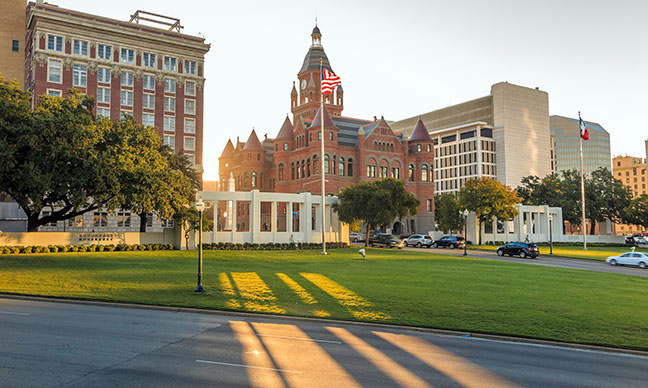Prevention is better than cure’, they say. And this does not only apply to human beings, but to trees as well. If not well taken care of, trees can be terrorized by diseases and pushed to their extreme end; death.
If you are like most tree lovers in Dallas, you may want to know, “What are the worst tree diseases in North Texas?”
Well, when it comes to tree disease Dallas often gets hit by the same ailments that are experienced in other parts of Texas. In this post, we discuss the most fatal to help you detect them early enough and take action before they destroy your greenery. Ready?
Deadly Tree Diseases in Dallas
There are several tree diseases that are experienced in Dallas and sadly, some of these can only be detected if one is keen enough. Among these include:
1. The Hypoxylon Canker
Hypoxylon canker is one of the worst tree diseases in North Texas in the fact that it has no cure. As we all know, Dallas is very susceptible to drought and unfortunately, this disease mostly strikes during the dry period.
It mostly occurs in the oaks, elms, pecans and sycamores. When hypoxylon canker attacks, the tree will exhibit the following signs:
- Barks peeling off of the tree quite unusually.
- Leaves falling off. Sometimes, depending on the season, leaves drop off the tree but if the shedding is not based on a season then this should be a red flag.
If a tree is stressed either by drought or flooding then it could be at risk of attack by the hypoxylon canker.
Ensure you are watering the tree sufficiently during the dry period. This helps prevent the tree from getting stressed, which reduces the chances of attack by diseases.
2. Fire Blight
The name “fire blight” is derived from the look displayed by a tree ailing from this disease. It is caused by bacteria, often spread by bees and birds as they move from one tree to another.
This disease mostly attacks fruit trees like apple trees and pears, especially during pollination. It has a capability of spreading like bush fire but when detected early, it can be controlled. The signs of fire blight are a couple, one of them being a sticky substance leaking from the bark of the tree unusually.
Related Posts: Fruit Trees That Grow In Dallas Texas & Bradford Pear Fire Blight
Pruning out any injured parts of the tree keeps it from stressing, accelerates healing, and may help fight the disease in the case of an attack.
3. Oak Wilt
As the name suggests, oak wilt manifests itself in oak trees more than any other tree species in Dallas, with the most affected varieties being the red and live oak. It is mostly spread through the roots, spores and by insects.
The most common sign of oak wilt is leaves turning brown and dropping off. This effect starts from the top going downwards; the roots are usually its last victim.
Pruning off the affected branches will reduce the spread of the disease to the healthy parts of the tree. After pruning, make sure to cover the freshly cut parts to prevent exposure.
Excavating a deep trench in between your oak trees can also reduce the spread between roots; it will literally draw a line between the sick and healthy trees. In case you are still unbothered, if this disease is not treated the tree will soon die.
Related Post: Treating Oak Wilt
4. Dutch Elm Disease
The Dutch elm disease is known to eliminate indigenous elm trees in Texas. Of course, nobody wants to tell stories of elm trees that are already extinct, right? So have your elms checked regularly to make sure they are in good shape.
The disease is spread by bark beetles and the signs include:
- Withered leaves
- Leaves discoloring: Leaves start changing color from the top going downward as the disease progresses and when it finally gets to the roots, the tree dies.
Unfortunately, by the time most people notice the signs of the disease, it’s usually too late and the only way to prevent the disease from spreading is by cutting down the tree and you can have this done professionally by any tree removal Texas service. To avoid this, have a professional arborist check your trees on a regular basis. With him, even the slightest red flags will never go unnoticed.
5. Anthracnose Disease
The anthracnose disease mostly affects hardwood trees especially the oaks. However, unlike the rest, this one doesn’t kill. Instead, it weakens the tree and causes premature loss of leaves.
But the fact that death is not involved is nothing to be happy about; why? A weakened tree means that it is more vulnerable to pests and other major diseases that could actually kill the tree.
6. Texas Oak Wild
Texas oak wild is referred to as the most savage oak disease in Texas. It is spread through the roots and often requires a professional to treat it.
An expert has to come in and take the correct measures to prevent new infection or passing the disease to other oak trees in your property.
Related Post: Oak Trees In Texas
7. Fungal Conk
Another common disease that highly spreads between trees in Dallas is the fungal conk. A tree with this infection will have fungus rotting on its bark. If you spot fungus or mushroom growing on or around the base of your tree or on the bark it could be the fungal conk disease.
However, it is worth noting that there are other infections that are characterized by similar signs. Hence, involving a reputable tree service Dallas company to evaluate the problem further would be the best action to simply avoid misdiagnosis.
Tree Service Removal Overview
When it comes to the most deadly tree disease Dallas happens to experience quite a number. Keep your Dallas property alive by making your trees your responsibility, and often treating them to some pruning or trimming when necessary and giving them enough water is already enough love.
However, sometimes you may do things right but diseases still find a way to creep in. Don’t tire! Involve an expert to ensure that your trees are always in the best shape.




